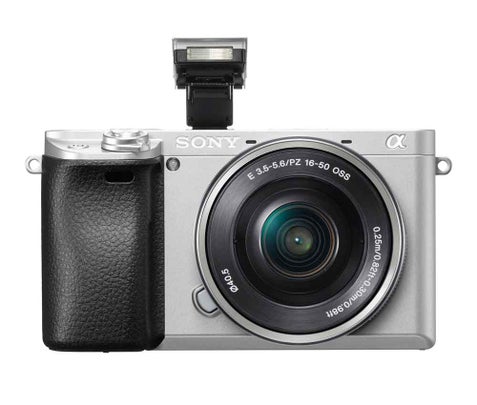New perk! Get after it with local recommendations just for you. Discover nearby events, routes out your door, and hidden gems when you sign up for the Local Running Drop.
We found two mirrorless cameras worthy of tri-tography greatness—for under $1K. Let’s see how they stack up.
Panasonic Lumix G85 with 12-60MM F3.5-5.6 Power O.I.S. Lens
$900, Amazon.com
What: With a tall, deep grip, fully articulating touchscreen, and functional controls, the G85 has fantastic usability. Panasonic’s mid-range, SLR-style mirrorless offering is loaded with features including WiFi, 4K video, and a slew of pre-baked image filters.
Pros: We love the dual image stabilization—one stabilizer in the camera body and one in the lens— that greatly reduces blur caused by unsteady hands and allows for buttery smooth 4K and 1080p video footage. The touchscreen can be used to focus the camera by simply tapping on the image and, when flipped around, can easily take selfies or vlog-style videos. While the included lens may appear to be the same as the Sony, the smaller sensor in the G85’s body yields a 24-120mm equivalent of a 35mm camera, nearly doubling the zoom power.
Cons: Though it can shoot nine frames per second, it can’t do that while continuously focusing. In order to capture fast-approaching cyclists and runners with an acceptable amount of keeper images, the G85 must be switched to AF-C focus mode and the MID burst rate settings, reducing the highest usable frame rate to 6 fps. A smaller sensor also results in noisier images with a lower dynamic range.
This is for: Casual photographers who value ease of use over speed and resolution—or for aspiring vloggers.

Sony A6300 with EPZ 16-50MM F3.5-5.6 OSS Lens
$900, Amazon.com
What: A performance powerhouse that rarely loses a specs race, except when running against its bigger brother, the A6300 is the Jonathan Brownlee of the Sony mirrorless, mid-range lineup.
Pros: The ability to snap off 11 shots per second to a 24MP sensor with continuous autofocus allows for a better chance of capturing tri-friends and family in a flattering, non-blurry pose. With a battery life of 400 shots and weighing less than a pound-and-a-half, the A6300 is ready for even the longest iron-distance event. Sony rounds out this setup with integrated WiFi for sending shots to your smartphone and excellent slow-mo and 4K video capabilities.
Cons: Being compact comes with compromises. While the 16-50mm lens is convenient for travel, it lacks the range needed to get tight shots from behind finish line barricades. The better-suited 18-135mm lens is now available as a kit lens option, but it’ll push the price above $1K. If you have larger hands, you may find your pinky awkwardly slipping under the bottom of the small grip. Also, by not having a separate aperture/shutter dial on the front of the camera, the rear control spin dial makes accidental setting changes all too frequent.
This is for: The budding amateur sports photographer who expects higher image quality and reliably sharp photos.
The Winner Is!
The Panasonic Lumix G85 for best-in-class autofocus, high frame-rate, and a larger sensor are a solid foundation for any sports photographer.
